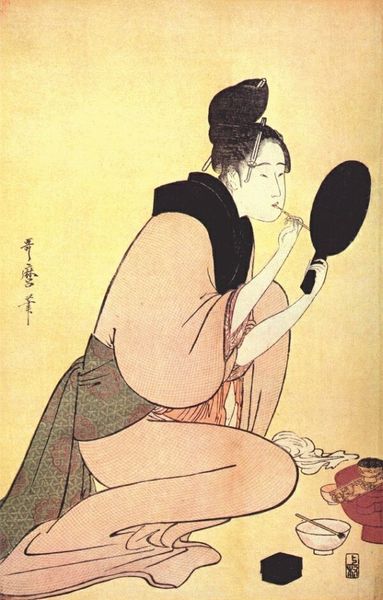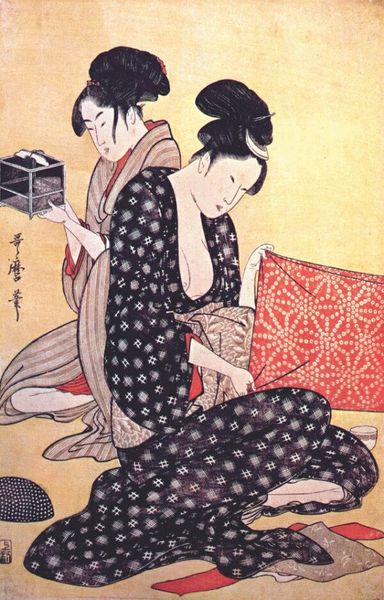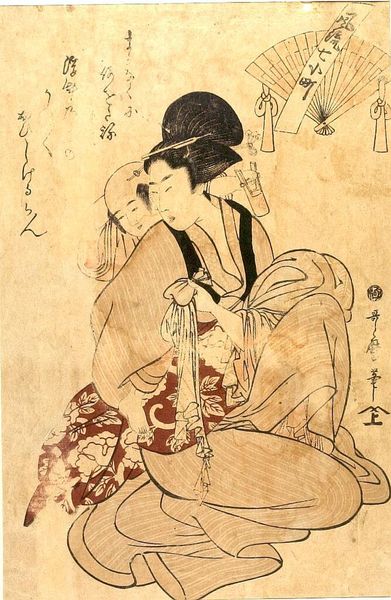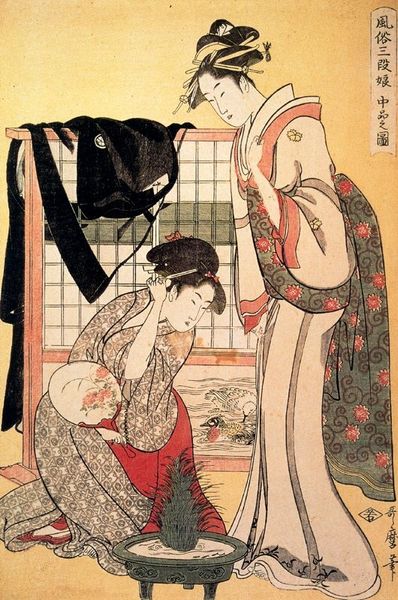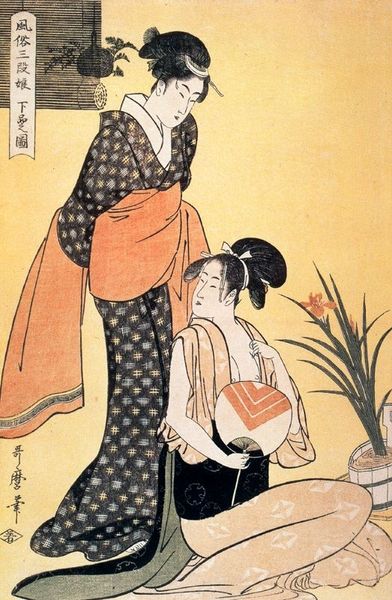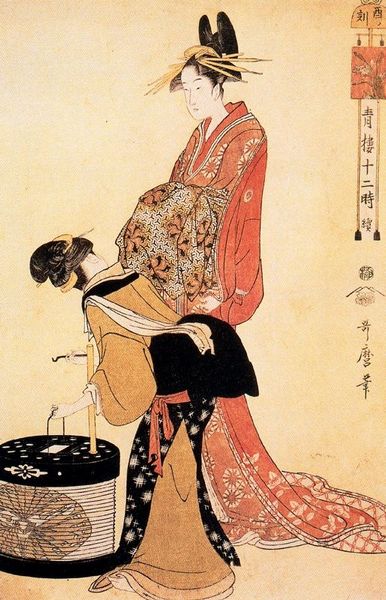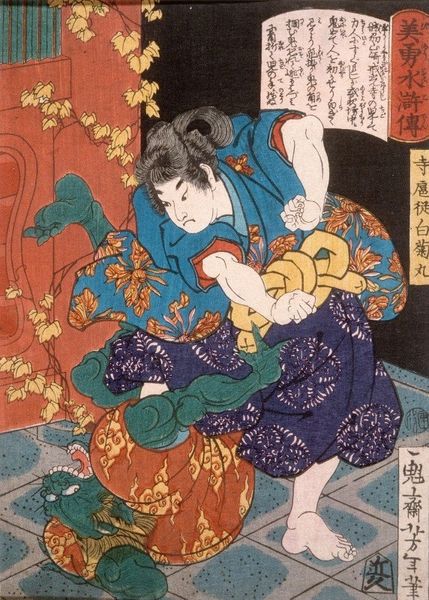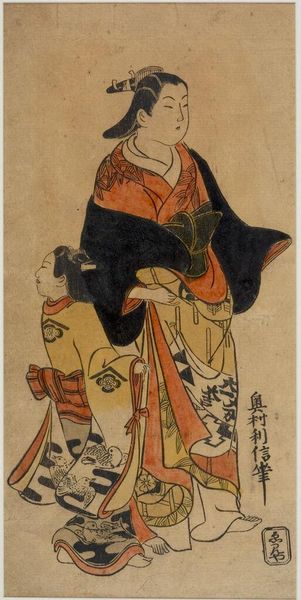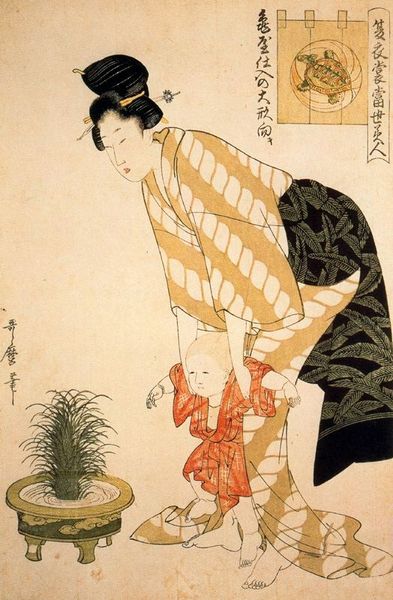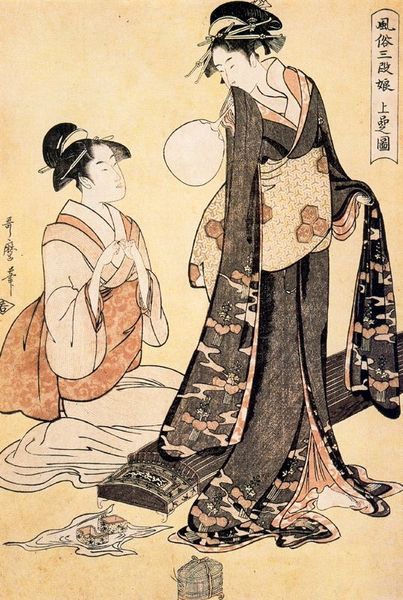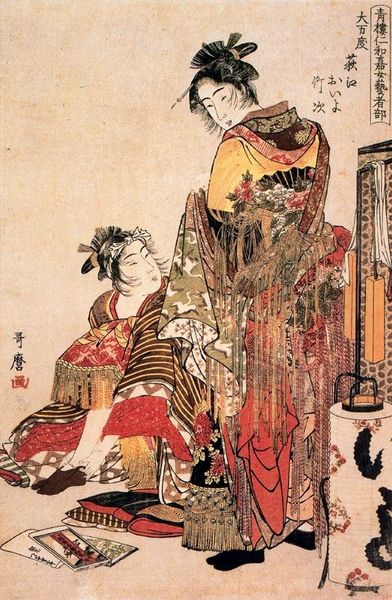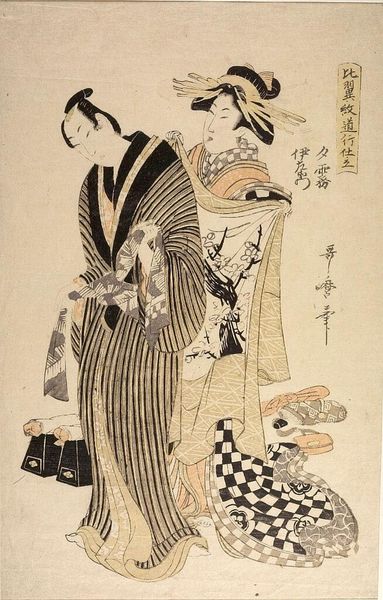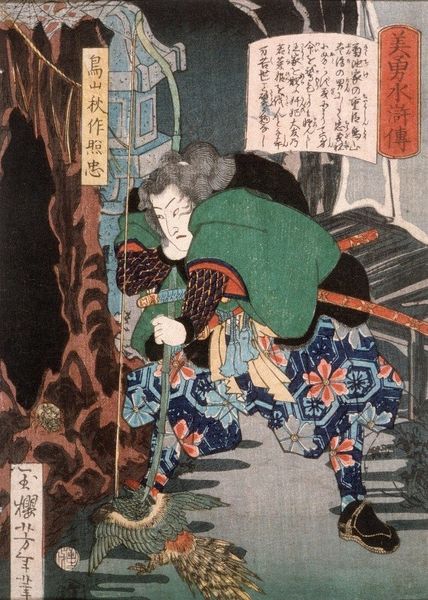
print, paper, ink, woodblock-print
#
portrait
# print
#
asian-art
#
caricature
#
ukiyo-e
#
paper
#
ink
#
child
#
intimism
#
woodblock-print
#
men
#
watercolour illustration
#
genre-painting
Copyright: Public domain
Curator: What captures my attention immediately is how Utamaro presents such a commonplace activity. This is one of his prints titled "Women Making Dresses," an exquisite example of Ukiyo-e artistry rendered with ink and color on paper. The seemingly mundane is elevated here, isn't it? Editor: Yes, there's an almost documentary quality to it, wouldn't you agree? Despite the artfulness, there's a raw authenticity. The scene feels intimate, capturing a very specific slice of life—the domestic space as a site of labour. And what is she revealing and concealing with the translucent cloth? Curator: Absolutely. Utamaro had a remarkable ability to distill profound meaning from daily routines. I notice particularly how the falling cloth motif works, framing her face even as she uses the fabric—almost veiling her—and the proximity to the child on the ground. The act of dressmaking takes on deeper significance as something both veiled and connected, perhaps hinting at inherited roles and cultural expectations? Editor: Precisely. And in considering women and labour, we must think about economic realities. The clothing of the time represented status and aspiration, particularly in urban settings. Utamaro highlights women's often invisible role not only in *creating* the culture of beauty but being caught up in the act of participating and perpetuating fashion. What does it cost these artisans who make dresses? Curator: A critical point to be certain to acknowledge! I'm also drawn to how he captures their features. These are not idealized figures but individuals, each imbued with unique expression, and with particular hairstyles which denote a sense of fashion and class. Even in the very flat pictorial space he gives each figure distinction and weight. They aren't merely types; they have depth. Editor: Right—the scene is both particular and universal, showing one woman but suggesting many other makers in their homes, behind the scenes. So this intimate portrayal functions to recognize a wider network of women engaged in domestic textile work. It is at once the individual and collective condition which resonates here. Curator: Well articulated. Considering that Utamaro and his artistic choices bring to light otherwise unseen female spaces in society certainly enriches our experience of this work. He encourages us to think about not just aesthetic beauty but also the invisible infrastructure that upholds it. Editor: I completely agree. By situating art within those intersectional spaces of labour and identity, we expand our perspective on the artistic merits *and* the social meaning of this work.
Comments
No comments
Be the first to comment and join the conversation on the ultimate creative platform.
